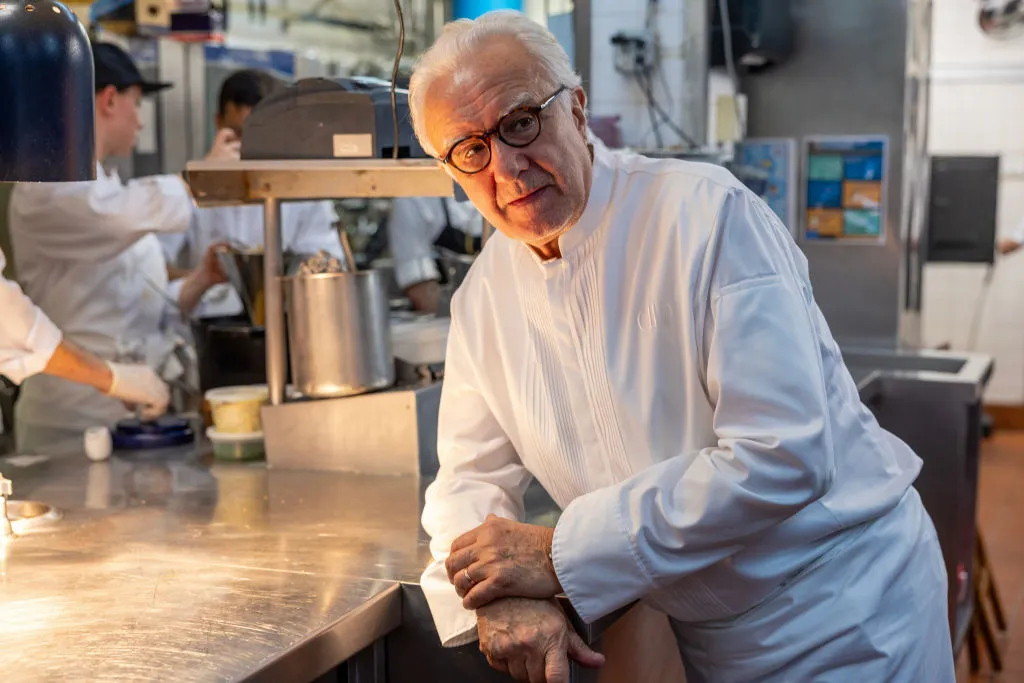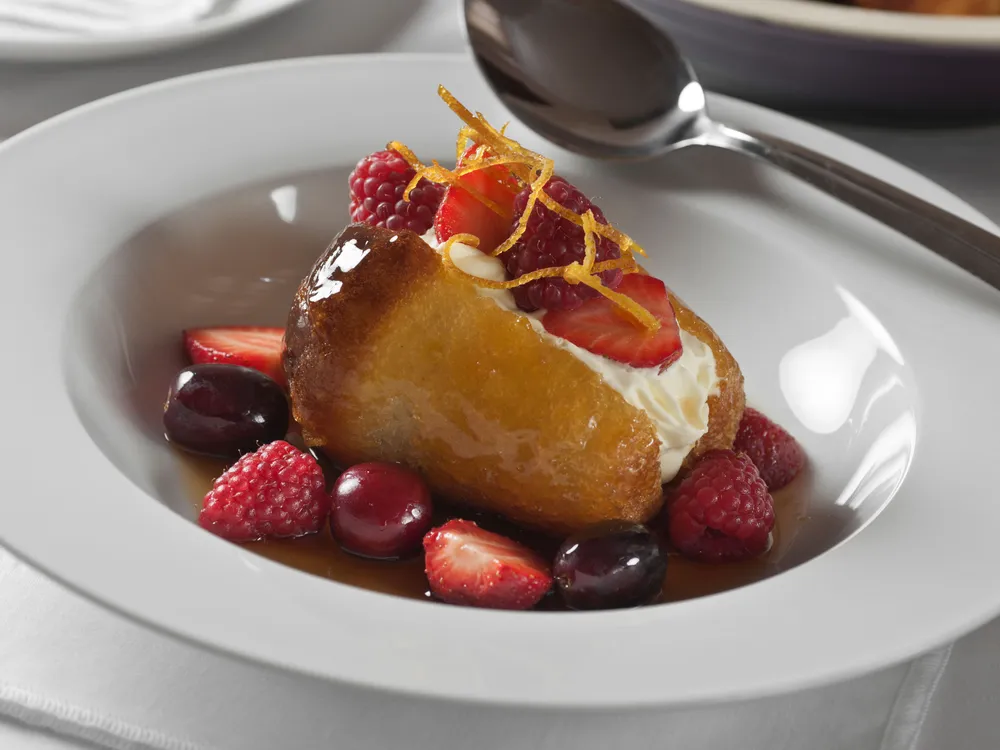The baba au rhum is forgiving and achievable for the average home cook.
Simon Reddy/Alamy
The French have an insatiable sweet tooth, and a trip to Paris would be incomplete without tasting a crispy vanilla cream-filled Napoleon, having a generous slice of opera cake, or feasting on a bag of chouquettes or macarons. While éclairs, crème brûlée and tarte tatin can be found in every corner patisserie, at each classic bistro and even in the city’s most revered Michelin restaurants these days, few desserts garner the same attention as the baba au rhum. The boozy dessert drenched in a rum syrup and served alongside a luscious portion of Chantilly cream has remained in fashion since being first consumed by Parisians in the early 18th century.
“Baba au rhum is more than just a dessert; it’s a symbol of an enduring culinary heritage and a testament to the timeless appeal of French pastry,” says chef Hélène Darroze. Baba au rhum is the signature dessert at her acclaimed restaurant Marsan in Paris. “It is a true gem of French pastry-making, and it’s no wonder that it has stood the test of time,” she says. “Making baba is a way for me to honor and preserve a piece of my culinary history.”
Unlike many French desserts that require a delicate touch from a professional pastry chef, the baba au rhum is forgiving and achievable for the average home cook. The purposefully dried-out cake is resuscitated with booze and served unapologetically with a copious amount of cream for that oh là là moment at the dining table.
The most venerable form of baba au rhum is found at one of France’s most beloved restaurants: chef Alain Ducasse’s Le Meurice. Considered the godfather of French cuisine, Ducasse is universally known for his high gastronomy and 21 Michelin stars—not to mention his baba au rhum. While he serves the dessert in all of his 34 restaurants around the world, nothing beats the original Ducasse baba at Le Meurice. It is here, in the Belle Époque-style dining room in Paris’ Hôtel Le Meurice, where the baba is served table-side with vintage rums from the Caribbean. The dessert is delicate, light and, yes, extra boozy. Yet, for the French, the baba au rhum is a far cry from the most elegant dessert out there.
Considered the godfather of French cuisine, Alain…
Click Here to Read the Full Original Article at Travel | smithsonianmag.com…
